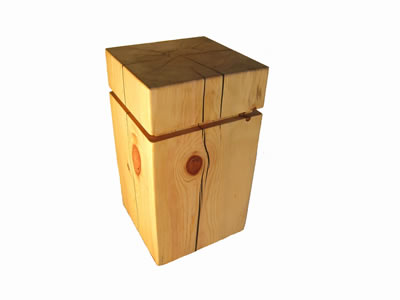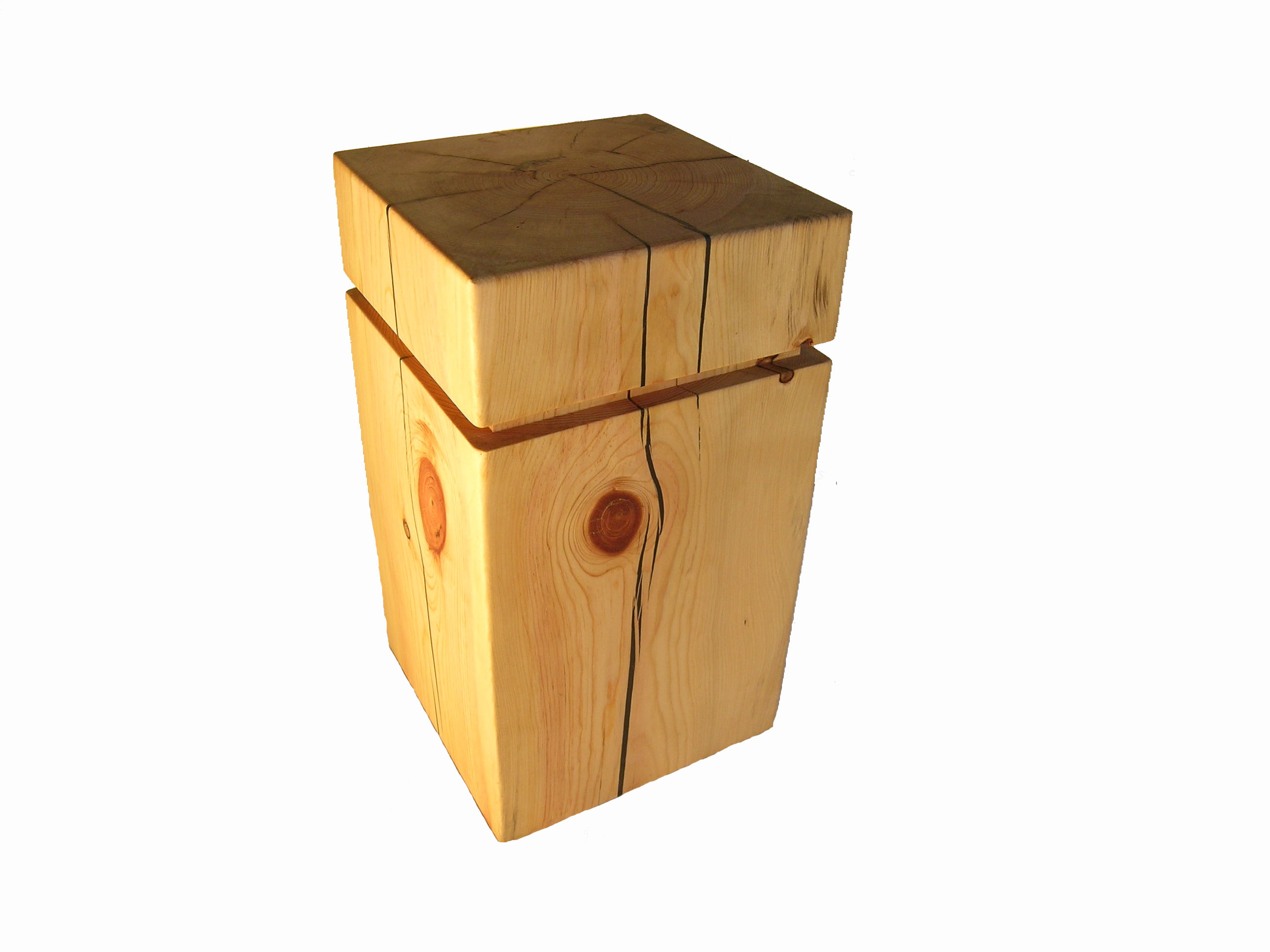|
|
Black Lighting Pine Block Table by Sherry Barrow
|
Black Lightning Pine Block Table
|
| |

|
Qty in Basket:
None
Code: 121SBTBL1
Price: $820.00
|
| |
There it sat in forest slash pile, waiting for its turn to be lit. Burning is the preferred method for reducing biomass in Southwestern Ponderosa pine forests, weather permitting. The slash pile is a thing of the past, and the little stump has taken on an elegant new life as wood with a story.
|
Additional Images |
 |
Additional Artist Creations:
|
|
|
|
|
|
|
|
|
My husband and I stopped to rest on a fallen log adjacent to the steep path. The forest had become integral to our relationship, It was spring, and the rains had come, and we saw life as good here in the Lincoln National Forest in the Southern mountains of New Mexico. At 9000 feet, the crisp air is pure and sweet, and we listened to the birds and small mammals rustling about their work, and watched a deer sip from the brook. Nonetheless, as we took in its beauty, we knew that our friend, the forest, was in jeopardy, for we had barely escaped another fire season. “Somebody really ought to try and figure out what can be done to improve this.” Well, yes, they should. For a while, there on that log next to the brook, our discussion focused outwardly, charging “someone” with responsibilities that screamed for attention. “They’d have to have the best science so they’d know how to improve ecosystem function.” “They’d have to recognize the inter-dependence within the forest. The animals all need each other in some way... the birds, squirrels, rabbits, bears, deer, elk, even the big cats.” “They’d have to consider the plants, trees and grasses, and the challenges of a forest service program that culls the sick and dying trees, then burns the slash without acknowledging the carbon impact.” “What if someone could make something out of the woody biomass so it wasn’t burned? Someone could make something that expresses the natural cycle of our forest!” “Wood with a story, done in a sustainable way, with real heart!” Something shifted, and we realized that WE WERE that “someone” who needed to do “something.” “It will be a huge commitment” Glen said, smiling. “Yes. It will.” I smiled too, and in that moment together, we accepted stewardship of something larger than ourselves. As our southwestern Ponderosa Pine forests tangle into dog-haired thickets, catastrophic wild fires ravage our lands. Yet federal and state land managers at last have begun to recognize the impact of decades of preventing the natural fire regime from doing its work. They now realize the necessity of thinning the forested lands in an effort to restore ecosystem function, much like thinning plants growing too closely in a garden. Yet, the carbon emissions of thinned biomass too often piled and burned, compounding the effects of global warming. This was the environment within which Glen and I formed a forest restoration company. We became the “someone” utilizing the woody biomass for sustainable products rather than sending the CO2 up in smoke. Today, our purpose is to find the best use for each size class and species of wood targeted for removal by the Forest Service.
|





